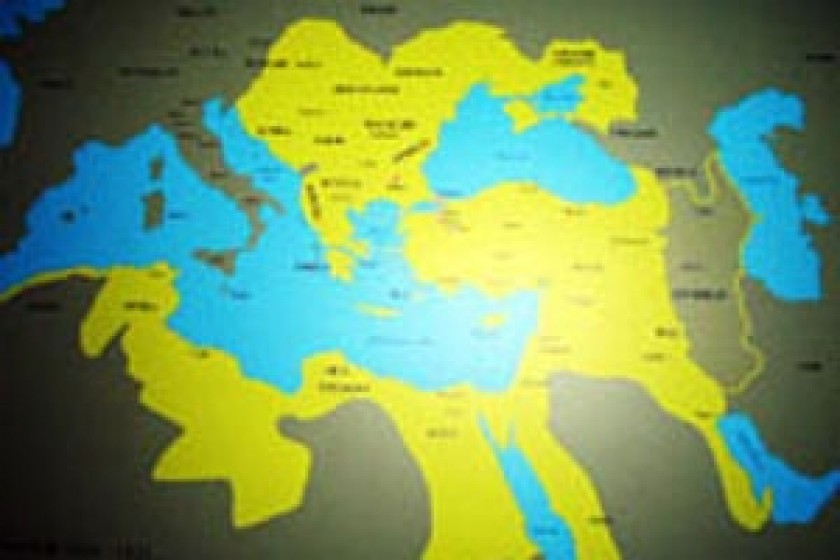
Assembly of Armenians of Europe
Turkish denialism of Armenians in the capital of Europe
abridged version
"Mothers, Goddesses and Sultans"- but not Armenians
The Palace of Fine Arts of Brussels ( Belgium ) hosts the exhibition on Turkey "Mothers, Goddesses and Sultans" which will last from October 06 2004 to January 16 2005 . The exhibition accounts pieces from the collection of the Topkapi Palace ( Turkey ), Louvre, Kunsthistorisches Museum in Vienna , the museums of Berlin and the most important museums in Turkey . This exhibition is organized with the mutual agreement of the prime ministers of Belgium and Turkey in order to introduce the Belgian and European society with the cultural values and the history of Turkey and intends to emphasize the European vocation of Turkey .
The leaflet on the exhibition distributed to the visitors at the entrance of the Palace of Fine Arts says "We encounter the peoples, who have left their traces in Anatolia in the course of 9000 years. The journey takes us through such renowned cultures as the Hitties, Greek and Roman antiquity, Byzantium and the Ottomans". From the first sight one may find the absence of the Armenians and Armenian culture in Anatolia very strange, since for centuries the Eastern Anatolia was the cradle of Armenians and it is also called the Armenian Plateau[i]. Even during the Ottoman Empire Armenians represented a sizeable and dynamic part of the ottoman population, particularly in Istanbul and other urban centre, and their omission in this exhibition is quite deliberate on the part of the Turkish organizers. But the most interesting piece of the exhibition is the map of the Ottoman Empire from 1299 to 1923, without any mention of the Armenians or Armenian Republic (the first Armenian Republic , 1918 - 1920) and Greece (independence of Greece recognized by the Ottoman Empire in 1832). No expert or historian would dare to make a single map to represent such a complex region over for such a long period of time (1299 - 1923), since the movement of borders has been radical over the period considered, and at times extremely rapid.
It is very strange to see the name of " Azerbaijan " on the map, while the names of Armenia and Greece are absent. As reported by Radio Free Europe, the Azerbaijani Defense Ministry spokesman called for Azerbaijan 's (the closest ally of the Republic of Turkey ) takeover of the entire territory of Armenia and removal of the entire Armenian population from the Caucasus . He went so far as to say, and we quote, "Within the next 25 years there will exist no state of Armenia in the South Caucasus ". This inevitably reminds of the intentions of the perpetrators of the Armenian Genocide. In this context the negationism of the Armenians is not a simple mistake or lack of professionalism by the organizers of the exhibition, but has its roots go back into the beginning of the 20th century - the Armenian Genocide committed by the Ottoman Empire in 1915. The Armenian Genocide is still denied by the Republic of Turkey , which also imposes a blockade on the Republic of Armenia for more than 10 years. Therefore, the radical exclusion of Armenians from ottoman history is consistent with the genocide carried out in 1915-1916 and it has been the practice in Turkey since the establishment of the republic in 1923.
The Assembly of Armenians of Europe considers such negationist and revisionist attitude of the Republic of Turkey , aspiring to the EU full membership unacceptable. We believe that such behaviour destabilizes the whole region of South Caucasus and impedes the normalization of Armeno-Turkish relations. Moreover, the extension of this denialist approach to an exhibition carried out in Belgium , in partnership with Belgian institutions, is a worrying sign at a moment when Turkey is pressing to join the European community of values. The Assembly of Armenians of Europe is sure that this is an attempt of the Turkish authorities to force their own denialist approach on an unsuspecting European public.
 Videos
Videos Photos
Photos




Write a comment